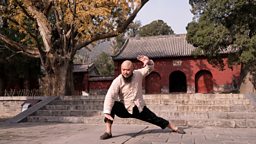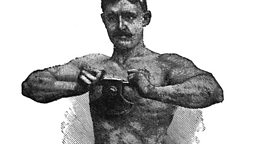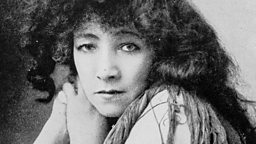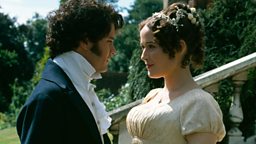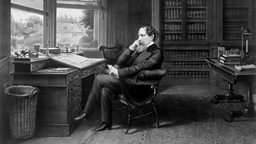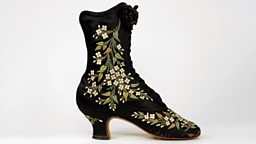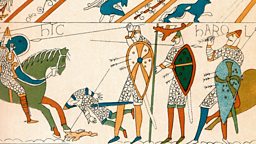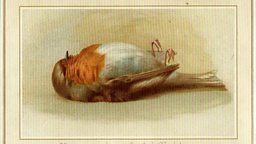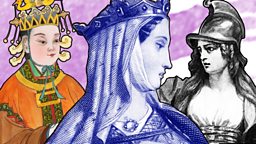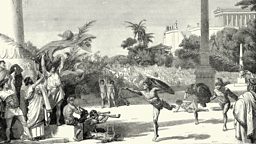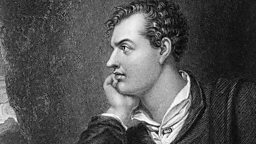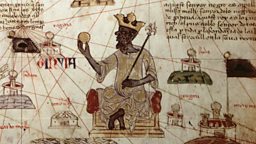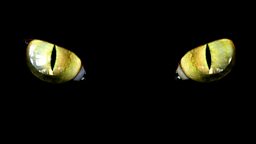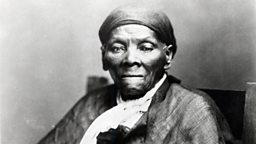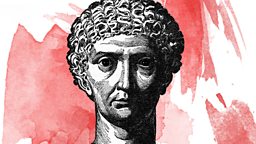7 things you didn't know about the Bayeux Tapestry
The Bayeux Tapestry is one of the most treasured artworks in the world, depicting the Battle of Hastings, which changed the course of European history. Given its significance, you might be surprised at how much you don’t know about one of the most famous craft projects in history.
On the hit podcast, You’re Dead To Me, host Greg Jenner talks to historian Dr Nina Ramirez and comedian Lou Sanders about the surprising history of the Bayeux Tapestry. Here are some of the things they reveal…
1. It wasn’t made in Bayeux…
Although it later came to be held by the Cathedral of Bayeux it was almost certainly made in Canterbury, England, in the 11th century, by nuns from Barking Abbey. It was commissioned to mark William the Conqueror's victory over Harold Godwinson.

2. … and it isn’t a tapestry
Tapestries are wonderful works of art woven on a loom. The famous Bayeux Tapestry, however, is an embroidery made from sheets of linen, with pictures added using individual stitches. It would have taken at least 45kg of wool, using ten colours made from different combinations of dyes from plants. The fabric would then have been tightly stretched in a wooden frame with 8-10 nuns gathered around to do the stitching. Not a loom in sight!
3. The bishop who likely commissioned the Bayeux Tapestry gave himself a starring role
The tapestry may have been made by nuns, but most medieval works of art were commissioned by wealthy patrons. Bishop Odo of Bayeux seems the most likely patron of the Bayeux Tapestry. Not only was he William the Conqueror’s half-brother and a powerful politician in his own right, but the Tapestry gives him a more prominent role in the Norman invasion than contemporary written sources did, including a scene where he is depicted like Jesus!
4. The Bayeux Tapestry features 623 men, 190 horses, 37 ships, 35 dogs, only three women…
…and 93 penises, although 88 of them belong to horses! The largest penis on the tapestry belongs to the horse of William the Conqueror, naturally.
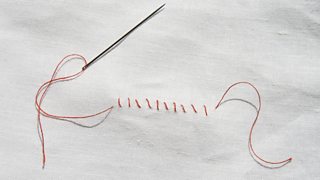
5. In the 19th century an (almost) exact replica was made by the ladies of Leek Society with one key difference
Extra undies! Yep, underpants were added in and some phalluses were “photoshopped” out. However, it wasn’t the very skilled women of the Leek Society who thought the tapestry needed knickers – they were given censored images from what is now the Victoria & Albert A Museum. You can go and visit the replica (and its new underpants) at the Reading Museum.
6. It probably doesn’t show Harold being shot in the eye with an arrow
Although this may be the most famous scene on the tapestry, the caption which reads “Harold Rex Interfectus Est” [“King Harold is killed”] probably refers to a different image which shows a man getting cut down with a sword – this is probably how Harold died.

Who's getting shot in the eye in the Bayeux Tapestry?
Dr Janina Ramirez, Greg Jenner and Lou Sanders on the true story of King Harold's death.
7. One of the biggest mysteries of the Bayeux tapestry is a woman named Aelfgyva
Of the three women depicted in the tapestry, there is Queen Edith (the sister of Harold Godwinson and widow of the previous King Edward the Confessor), an anonymous woman fleeing from a burning building, and Aelfgyva. The mysterious Aelfgyva is shown being touched on the face by a cleric and she must have been very significant as she is named on the tapestry; but, tantalisingly, historians have no idea who she is!





